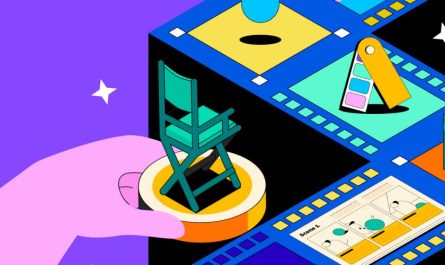Introduction
Pixar Animation Studios has long been at the forefront of animation innovation, blending storytelling with cutting-edge technology. Over the years, the studio has consistently pushed the boundaries of animation, moving from traditional 2D techniques to 3D CGI. However, with the rise of Artificial Intelligence (AI), Pixar’s animation pipeline has evolved significantly. The studio is now harnessing AI to streamline various stages of the production process, making it faster, more efficient, and even more creative. In this blog, we’ll explore how AI is transforming Pixar’s animation pipeline, especially in the creation of Elemental and beyond.
Why is This Important?
As AI keeps getting better, it’s becoming a must-have for industries everywhere, and animation is no different. Pixar jumping on the AI bandwagon is a big deal in the animation world. These AI tools help them make better visuals and speed up production—super important in a competitive industry. Thanks to AI, Pixar can tell more exciting stories and create rich, detailed environments that would’ve taken ages to make with old-school methods. This innovation helps Pixar stay ahead and keeps them making movies that wow audiences around the globe.
By the way, if you’re looking for a creative push in your marketing efforts, an Integrated Marketing Agency in Bangalore or an Integrated Marketing Agency in Mumbai can give you the right tools to elevate your brand. There are also plenty of Creative Agencies in Bangalore ready to bring your ideas to life with the latest tech and creativity.
Pixar’s Animation Pipeline Before AI
Before the integration of AI, Pixar’s animation process relied heavily on manual techniques and traditional CGI tools. Animation was labor-intensive, requiring extensive effort to achieve even the smallest movements and intricate details. The entire process was meticulously planned, from storyboarding to modeling, rigging, texturing, lighting, and rendering.
Historically, the animation pipeline at Pixar was built around a complex series of stages that required collaboration between animators, technical directors, lighting artists, and software engineers. Each of these steps required precise attention to detail, and it could take several years to complete a single movie.
AI in Pixar’s Animation Pipeline
With advancements in AI, Pixar has revolutionized its production process. The incorporation of AI technologies like volumetric scanning, machine learning algorithms, and neural networks has made animation faster, more accurate, and richer in detail. Let’s take a closer look at how these innovations have shaped Pixar’s workflow.
1. AI-Powered Volumetric Scanning
For their movie Elemental, Pixar adopted a technique known as volumetric scanning. This technology helps capture detailed 3D data of objects and environments, which is then transformed into lifelike animation. Volumetric scanning allows Pixar to create more realistic and dynamic scenes that are both immersive and natural.
Using AI, Pixar is now able to quickly process these scans, translating them into 3D models that are integrated into the animation pipeline. This technology allows the team to create detailed, realistic environments and characters without spending excessive time on manual modeling.
2. AI and Character Animation
AI is also transforming the way Pixar animates characters. Traditional animation required animators to meticulously craft every motion frame by frame. With AI, Pixar has integrated machine learning algorithms that analyze and predict how characters should move based on their environment, emotions, and other stimuli. This has allowed for more fluid and natural animation, significantly speeding up the process.
Moreover, AI-driven tools can automatically generate in-between frames, known as “tweening,” allowing animators to focus on the more creative and complex aspects of the animation. This technique has made character animation much more efficient without compromising quality.
3. Lighting and Rendering with AI
Lighting and rendering have always been one of the most time-consuming parts of animation. Pixar’s traditional rendering methods, while incredibly sophisticated, could take hours or even days to achieve the perfect lighting effects. However, with the integration of AI tools, Pixar has been able to optimize the rendering process.
AI helps in predicting the way light interacts with surfaces, materials, and environments, speeding up the process significantly. Additionally, AI-driven tools allow animators to preview lighting and shading effects in real-time, reducing the trial-and-error aspect of rendering and improving the overall visual experience.
4. AI-Assisted Storyboarding
AI has also found its way into the early stages of production, particularly in storyboarding. AI-driven software can analyze scripts and create preliminary storyboards automatically, suggesting scenes, camera angles, and even character placements. This helps the creative team to focus on refining their ideas rather than spending time on the initial, mechanical aspects of storyboarding.
The Role of AI in “Elemental”
Elemental is one of Pixar’s most recent films where the integration of AI technologies played a key role in its creation. The movie features complex environmental elements like water, fire, and air, which posed unique challenges for animators. With AI-powered tools, Pixar was able to simulate natural elements with an unprecedented level of detail and fluidity.
AI was especially useful in creating the interactions between the elemental characters and their environments. By using machine learning algorithms, Pixar was able to simulate realistic movements of fire, water, and air, as well as the way these elements interact with each other. This added a layer of depth and realism to the film that would have been incredibly difficult to achieve with traditional animation techniques.
The Future of AI in Animation
The potential for AI in animation is still unfolding. As AI tools become more sophisticated, Pixar and other animation studios will likely continue to incorporate new technologies to enhance their creative capabilities. The integration of AI will lead to even faster production timelines, allowing studios to create films more efficiently while maintaining or even increasing the quality of their work.
Moreover, AI is also paving the way for more personalized and interactive content. As AI becomes better at understanding audience preferences and behaviors, it may eventually lead to the creation of dynamic, personalized animations or even AI-driven storytelling.
Conclusion
Pixar is making big waves by using AI in its animation process. The studio has figured out how to stay on top of its game while keeping things fresh and innovative. Thanks to AI, Pixar is able to do cool stuff like volumetric scanning, better lighting, and faster rendering—all while keeping the quality high. As AI keeps improving, Pixar’s animation process will get even better, giving the team more creative freedom to bring new ideas to life. By staying on the cutting edge of tech, Pixar makes sure their stories stay just as magical as ever!
Interested in learning more? Get in touch, and let’s see how we can help you too!
Trending FAQs About Pixar’s Animation and AI
How does Pixar use AI in animation?
Pixar uses AI in several ways: for 3D scanning, making characters move more naturally, improving lighting, and speeding up the rendering process. All of these make animation smoother and faster.
What is volumetric scanning?
It’s a tech that captures real-world 3D data, helping animators create ultra-realistic scenes.
How does AI help with character animation?
AI looks at how characters should move, making their actions smoother and more lifelike. It also reduces the time animators spend doing repetitive work.
What does AI do with lighting in animation?
AI helps figure out how light should look on objects and environments, which makes rendering faster while still looking awesome.
Can AI help with storyboarding?
Yep! AI can analyze scripts and suggest camera angles and character positions, helping animators plan scenes quicker.
What is AI-assisted rendering?
AI helps speed up rendering by making sure shadows, lighting, and textures are spot-on, without taking forever.
How did AI help with Pixar’s Elemental?
AI made it possible to create realistic effects like fire, water, and air, letting characters interact with these elements in a more natural way.
Is AI replacing human animators?
No way! AI is just making the process easier and faster, so animators can focus on the creative parts of filmmaking.
Are other studios using AI too?
Totally! Studios like DreamWorks and Sony Pictures Animation are also using AI to make their animations better and faster.
What’s the future of AI in animation?
AI will keep getting better, making animation even more personalized and interactive. Plus, it’ll help studios finish projects quicker.
Some of the services that Clevertize provides are:
Creative Services, Performance & Digital Media Marketing, Visual Identity & Branding, Campaign Management & Analysis, UI/UX & Website Design, Video Creation, Media Planning & Buying, Chatbot & More.
If Return on Investment is critical for you, talk to Clevertize!
Reach out to us at saumya@clevertize.com!





